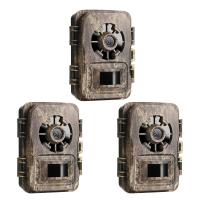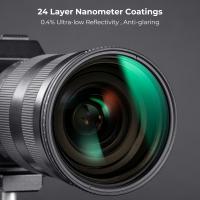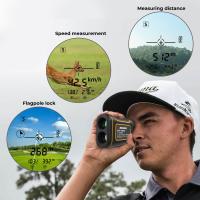Asperities Are Microscopic Peaks And Valleys On ?
the surface of a material. They can be found on various types of surfaces, including metals, rocks, and even human skin. Asperities play a crucial role in determining the friction and wear characteristics of materials. When two surfaces come into contact, the asperities interlock, creating frictional forces that resist relative motion. This interlocking mechanism is responsible for the generation of frictional heat and wear debris. The size, shape, and distribution of asperities can greatly influence the overall friction and wear behavior of a material. Understanding and controlling the asperity characteristics is important in various fields, such as engineering, materials science, and tribology, as it can help optimize the performance and durability of components and systems.
1、 the surface of a material or object.
Asperities are microscopic peaks and valleys on the surface of a material or object. These irregularities can be found on various surfaces, including metals, plastics, and even natural materials like rocks and minerals. The presence of asperities greatly affects the physical properties and behavior of materials.
The study of asperities is crucial in understanding friction, adhesion, and wear between surfaces. When two surfaces come into contact, the asperities interlock, creating frictional forces that resist relative motion. This interlocking mechanism is responsible for the grip between tires and roads, the adhesion between two surfaces, and the wear and tear experienced by materials in contact.
Recent research has shed light on the role of asperities in various fields. For example, in the field of tribology, scientists are exploring ways to control and manipulate asperities to reduce friction and improve the efficiency of mechanical systems. By understanding the topography and characteristics of asperities, researchers can design materials with specific surface roughness to optimize performance.
Moreover, asperities play a significant role in the field of nanotechnology. The ability to engineer and control the surface roughness at the nanoscale level has opened up new possibilities for creating superhydrophobic surfaces, self-cleaning materials, and enhanced adhesion properties.
In conclusion, asperities are microscopic peaks and valleys on the surface of a material or object. They have a profound impact on the behavior and properties of materials, influencing friction, adhesion, and wear. Ongoing research in this field continues to uncover new insights and applications, leading to advancements in various industries, from automotive engineering to nanotechnology.
2、 Topography
Asperities are microscopic peaks and valleys on the surface of an object or material. In the context of topography, asperities refer to the small irregularities or roughness found on the Earth's surface. These asperities can be observed at various scales, ranging from the microscopic level to larger features such as mountains and valleys.
The study of topography and the understanding of asperities have evolved over time. Traditionally, topography was primarily studied through field surveys and the use of instruments such as theodolites and total stations. These methods provided valuable information about the shape and elevation of the land surface but had limitations in capturing the finer details of asperities.
With the advent of remote sensing technologies, such as LiDAR (Light Detection and Ranging) and satellite imagery, our ability to capture and analyze topographic data has greatly improved. These technologies allow for the creation of highly accurate and detailed digital elevation models, which can reveal the intricate patterns of asperities on the Earth's surface.
Furthermore, recent advancements in computer processing power and algorithms have enabled the analysis of large datasets and the extraction of valuable information from topographic data. This has led to a better understanding of the role of asperities in various natural processes, such as erosion, sediment transport, and the formation of landforms.
Moreover, the study of asperities has extended beyond Earth's topography. Scientists have also explored the presence of asperities on other celestial bodies, such as the Moon and Mars, using data obtained from space missions. These studies have provided insights into the geological history and processes shaping these extraterrestrial landscapes.
In conclusion, asperities are microscopic peaks and valleys on the Earth's surface, which can be observed and analyzed through various technological advancements in topographic mapping. The latest point of view emphasizes the importance of remote sensing technologies and computational analysis in understanding the role of asperities in shaping our planet's topography. Additionally, the study of asperities extends beyond Earth, providing valuable insights into the geology of other celestial bodies.
3、 Roughness
Asperities are microscopic peaks and valleys on the surface of an object, contributing to its roughness. These irregularities can be found on various materials, including metals, ceramics, and even biological surfaces. The presence of asperities affects the friction, adhesion, and wear characteristics of the object.
In the past, asperities were primarily considered as obstacles to smooth sliding or rolling motion. However, recent research has revealed a more nuanced understanding of their role. It is now recognized that asperities can actually enhance certain functionalities and improve performance in specific applications.
For instance, in the field of tribology, the study of friction, lubrication, and wear, asperities play a crucial role. The interaction between asperities on two surfaces determines the frictional forces between them. By controlling the size, shape, and distribution of asperities, engineers can manipulate friction to optimize performance. This knowledge has led to the development of advanced lubricants and coatings that reduce friction and increase the lifespan of mechanical components.
Moreover, asperities also influence the adhesion between surfaces. When two surfaces come into contact, the asperities interlock, creating a stronger bond. This phenomenon is exploited in various applications, such as adhesive bonding and microfabrication techniques.
Furthermore, asperities on biological surfaces have gained significant attention in recent years. They play a crucial role in biological adhesion, allowing organisms to cling to surfaces or move efficiently through their environment. Understanding the structure and function of asperities on biological surfaces has inspired the development of bio-inspired materials and surface textures with enhanced adhesion properties.
In conclusion, asperities are microscopic peaks and valleys that contribute to the roughness of an object's surface. While traditionally seen as obstacles, recent research has revealed their importance in various fields. By understanding and manipulating asperities, engineers and scientists can optimize friction, adhesion, and wear characteristics, leading to improved performance and the development of innovative materials and technologies.
4、 Surface texture
Asperities are microscopic peaks and valleys on the surface texture of an object. These irregularities can be found on various materials, including metals, plastics, and even natural surfaces like rocks and minerals. The presence of asperities greatly influences the physical properties and behavior of surfaces, such as friction, adhesion, and wear.
Surface texture plays a crucial role in many industries and applications. For example, in manufacturing, the control of surface roughness and asperities is essential for ensuring proper functionality and performance of components. In the automotive industry, asperities on engine parts can affect the efficiency of lubrication and contribute to wear and tear. Similarly, in the field of tribology, the study of friction, lubrication, and wear, understanding the nature and behavior of asperities is vital for developing effective lubricants and reducing energy losses.
Recent advancements in surface analysis techniques, such as atomic force microscopy (AFM) and scanning electron microscopy (SEM), have allowed researchers to study asperities at an unprecedented level of detail. These techniques enable the visualization and measurement of surface roughness and asperity characteristics, such as height, width, and spacing. Additionally, computer simulations and modeling have provided valuable insights into the behavior of asperities under different conditions.
Understanding the role of asperities in surface interactions has led to the development of innovative surface engineering techniques. For example, in the field of nanotechnology, researchers are exploring ways to manipulate and control asperities at the nanoscale to create superhydrophobic surfaces, self-cleaning coatings, and enhanced adhesion properties.
In conclusion, asperities are microscopic peaks and valleys on the surface texture of materials. They have a significant impact on the physical properties and behavior of surfaces, influencing friction, adhesion, and wear. Recent advancements in surface analysis techniques and modeling have provided valuable insights into the nature and behavior of asperities, leading to the development of innovative surface engineering techniques.






























